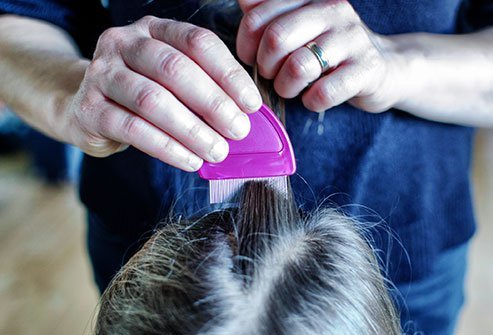Do Head Lice Live on Pillows?

Head lice do not live on pillows or sheets, as they need to feed on the scalp of a host in order to survive. According to the CDC, lice can only survive for 48 hours after falling from a host scalp. Although lice can crawl from one person’s head to another if both are using the same bedding, the likelihood of catching lice this way is very rare.
After you have gotten rid of lice from your hair, however, you should clean your home thoroughly to remove any remaining lice or lice eggs.
How to clean your bedding after a lice infestation
Remove and wash all bedding in hot water, then dry on high for 20-30 minutes. If your pillows or sheets are not machine washable, seal them in a large plastic bag and leave them for 7-10 days to make sure all lice and nits have died.
You can also spray your bedding as an extra preventative measure, using sprays that contain insecticides similar to those found in lice shampoos.
If you aren’t sure whether you have been able to clean your bedding thoroughly enough, another option is to simply toss them out and replace them.
How common is head lice?
Head lice infestation is extremely common and can affect anyone, regardless of how clean or short your hair is. However, they most often affect school-aged children, and girls may be more susceptible than boys.
Lice are small, gray-brown insects that burrow into the scalp and cannot fly or jump. They are typically spread through head-to-head contact. A single louse takes about 30 seconds to crawl from one scalp to another.
Lice eggs, also called nits, are small oval-shaped white or clear dots. Nits typically adhere to hair shafts at a 45-degree angle.
What are symptoms of head lice?
While not everyone with head lice experiences the same symptoms, common signs of head lice include:
- Itchiness: Itching on the scalp, neck, or ears is often caused by an allergic reaction to louse saliva or feces. However, this symptom may not appear until 2-6 weeks after the infestation starts.
- Red bumps or sores: Excessive scratching can lead to a bacterial infection with swollen lymph nodes, tender skin, and oozing sores. If this occurs, your doctor may prescribe antibiotics to treat the infection.
- Trouble sleeping: Because lice are more active in the dark, people with head lice may have difficulty falling asleep.
If you cannot find any lice but are still experiencing symptoms, consult your doctor.
What is the best way to treat head lice?
The best and safest way to get rid of head lice is to manually comb them out with a metal or a wooden comb. Specially designed combs with thin, closely spaced teeth can remove lice and nits by dislodging the claws they use to stick to hair strands.
Because lice are small and hard to remove, combining multiple treatments can create an effective line of defense against them:
- Head lice shampoos are designed to be used as a regular shampoo and can be applied to wet or dry hair and left on for several minutes. Shampoos are gentler than chemical treatments and may contain more natural ingredients. Because these products are not as potent, however, they must be applied repeatedly over several days for maximum effectiveness. Many shampoos, however, do not remove nits and require the use of a lice comb.
- Pesticides or chemicals such as permethrin can kill lice effectively after being applied to dry hair and left on for 5-10 minutes. While permethrin is safe to use on children as young as 2 years old, consult with your doctor before use, especially if the child has an inflamed scalp. Because many treatments do not kill eggs, they may need to be reapplied several times over 2-3 weeks and require combing out dead lice and nits after each application.

